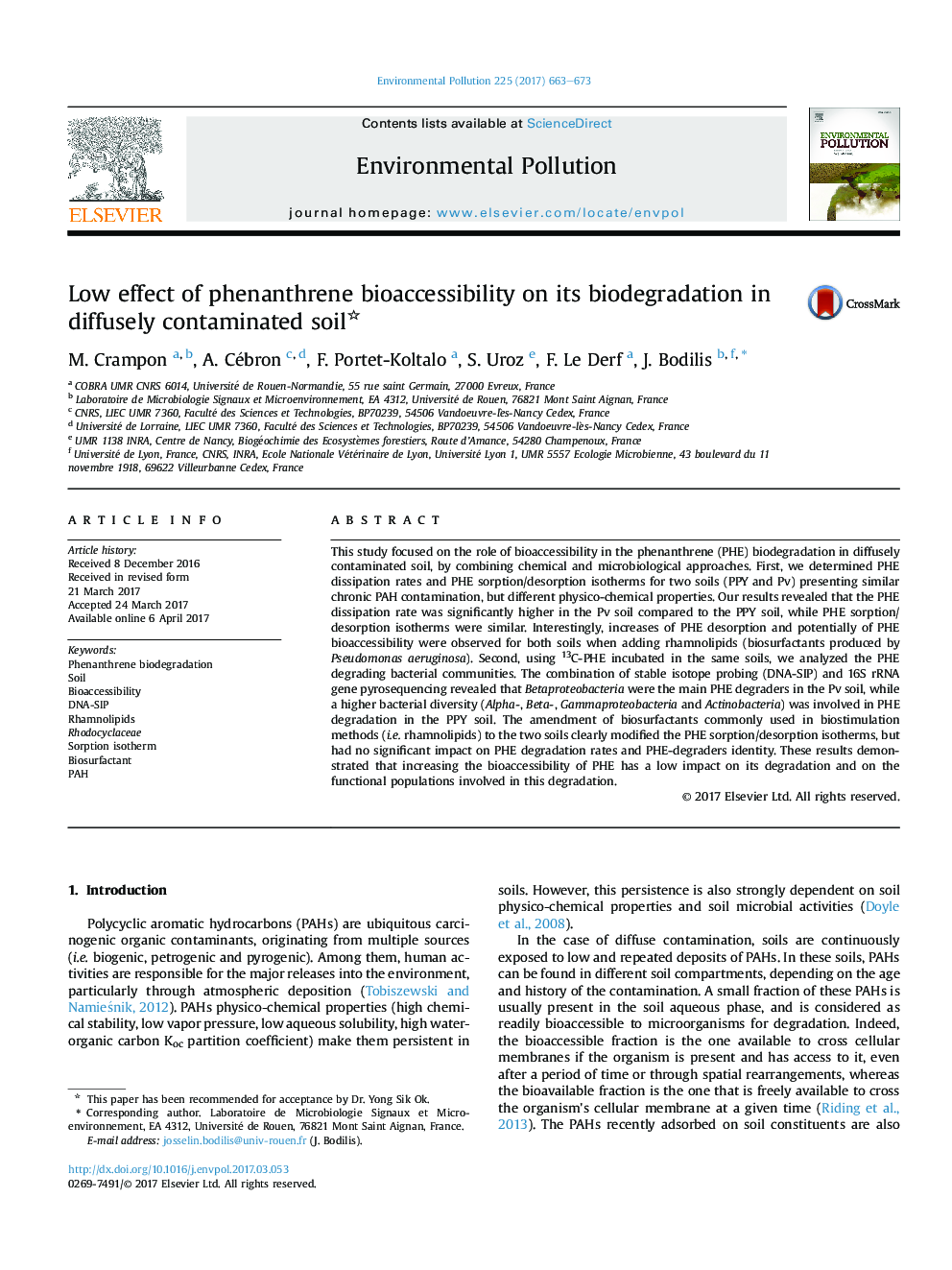| Article ID | Journal | Published Year | Pages | File Type |
|---|---|---|---|---|
| 5748976 | Environmental Pollution | 2017 | 11 Pages |
â¢Bioaccessibility is not a key factor for phenantrene degradation in soil.â¢Rhamnolipids change the phenanthrene sorption kinetics, but not its degradation rate.â¢The Rhodocyclaceae family represents key phenanthrene-degraders.â¢Rhamnolipids do not modify the diversity of the main phenanthrene-degraders.
This study focused on the role of bioaccessibility in the phenanthrene (PHE) biodegradation in diffusely contaminated soil, by combining chemical and microbiological approaches. First, we determined PHE dissipation rates and PHE sorption/desorption isotherms for two soils (PPY and Pv) presenting similar chronic PAH contamination, but different physico-chemical properties. Our results revealed that the PHE dissipation rate was significantly higher in the Pv soil compared to the PPY soil, while PHE sorption/desorption isotherms were similar. Interestingly, increases of PHE desorption and potentially of PHE bioaccessibility were observed for both soils when adding rhamnolipids (biosurfactants produced by Pseudomonas aeruginosa). Second, using 13C-PHE incubated in the same soils, we analyzed the PHE degrading bacterial communities. The combination of stable isotope probing (DNA-SIP) and 16S rRNA gene pyrosequencing revealed that Betaproteobacteria were the main PHE degraders in the Pv soil, while a higher bacterial diversity (Alpha-, Beta-, Gammaproteobacteria and Actinobacteria) was involved in PHE degradation in the PPY soil. The amendment of biosurfactants commonly used in biostimulation methods (i.e. rhamnolipids) to the two soils clearly modified the PHE sorption/desorption isotherms, but had no significant impact on PHE degradation rates and PHE-degraders identity. These results demonstrated that increasing the bioaccessibility of PHE has a low impact on its degradation and on the functional populations involved in this degradation.
Graphical abstractDownload high-res image (332KB)Download full-size image
